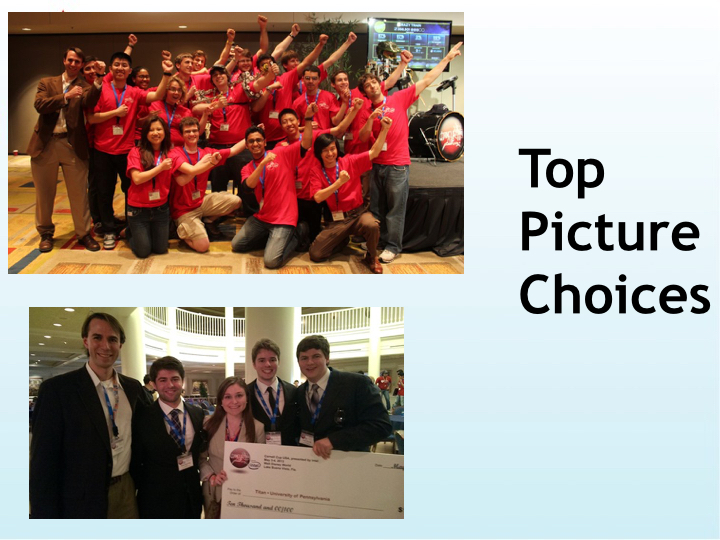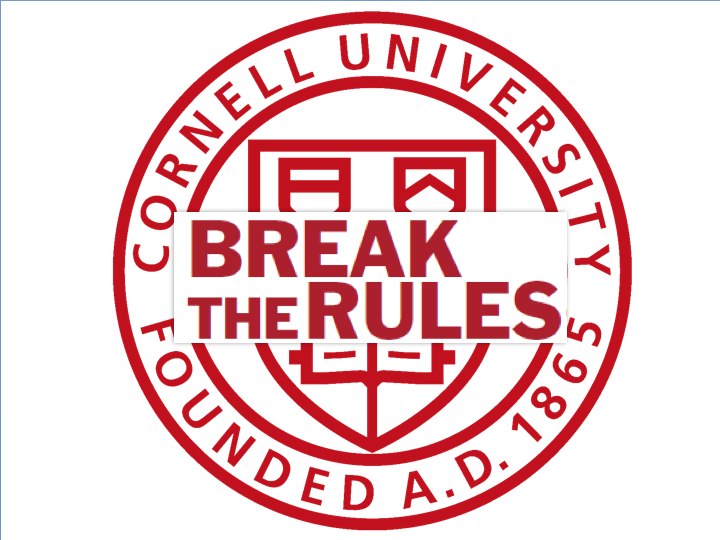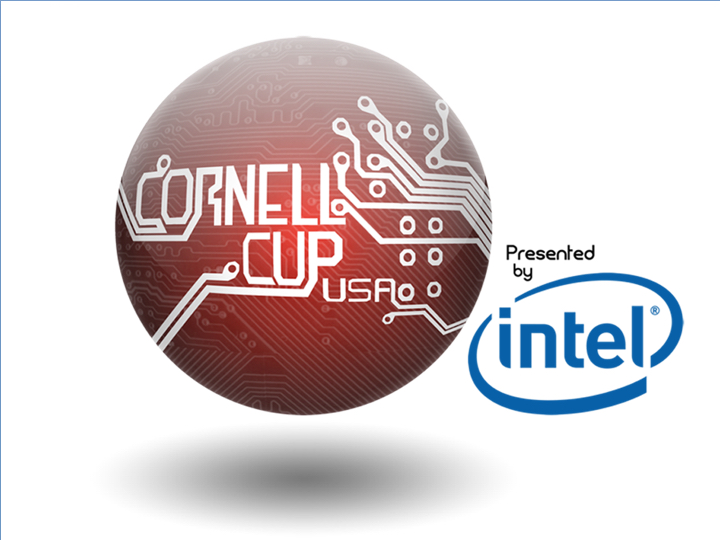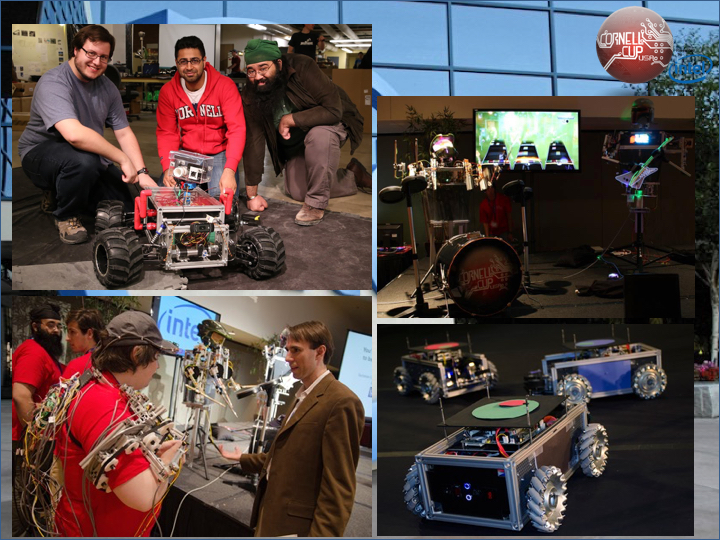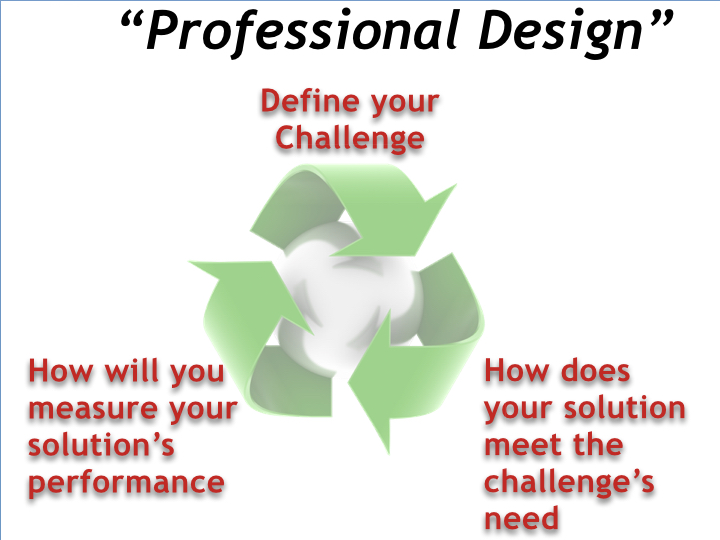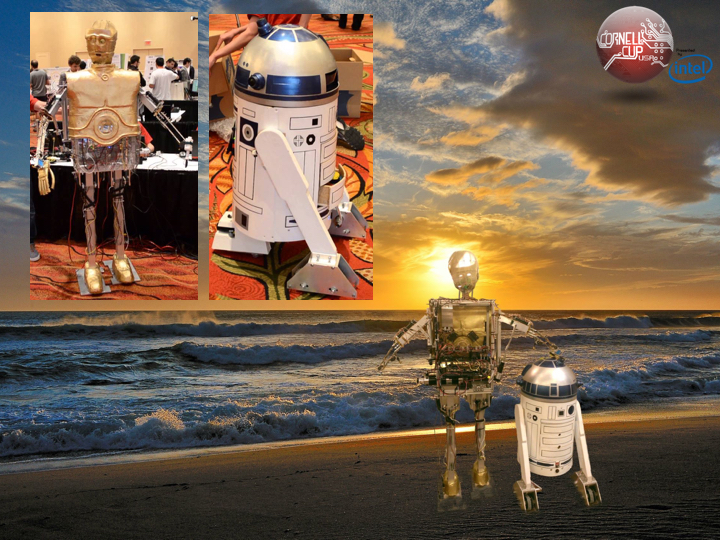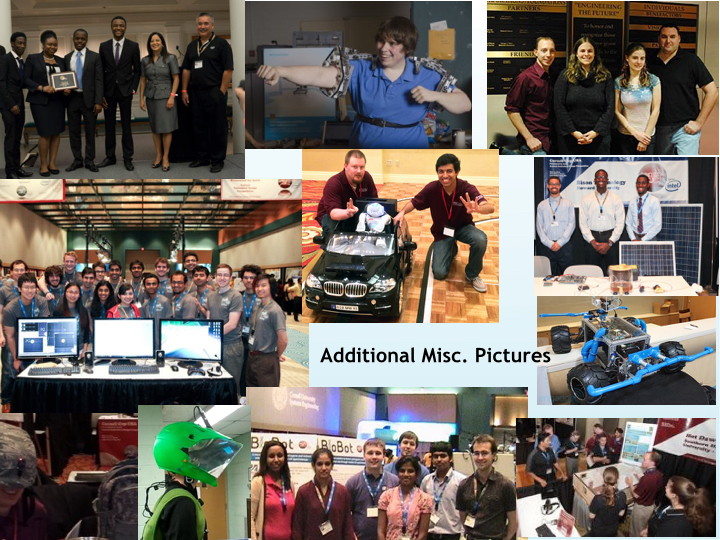Goals of the project
The Intel-Cornell Cup is a college level embedded design competition created to empower student to become the inventors of the newest innovative applications of embedded technology. More so, the competition fosters the development of professional design skills to elevate their innovative ideas into prototype designs that have the potential to become a reality. The Cup runs as an annual academic year long experience culminating in a final 2-day summit event at NASA Kennedy Space Center or Walt Disney World, and is open to teams of 3-5 students of US and Canada university undergraduate or masters level engineering or computer science programs.
In the Maker spirit, students are empowered to create any embedded system. However, students must formally define the challenge and needs their entry targets, and describe how their entry meets those needs. More so, teams must also determine how to evaluate any solution to those needs and thereby prove their solution’s value as one of the best, if not the best current solutions to that challenge. This dedication to validating that needs are met instead of solely focusing on an end product enables the competition to serve as a launchpad for students to make a real-world difference.
Nature of the Collaboration
There is a strong collaboration between Cornell and Intel on this project, with each offering key elements that make the whole better than the sum of its parts. Intel provides the financial resources, industry perspective, technical support for embedded hardware, and is a strongly-involved partner with Cornell in everything from weekly logistics meetings to conducting design reviews that many teams say was one of the most important milestones in their project development.
Cornell also creates the competition rules with an emphasis on fairness and transparency, coordinates the relationship with the participating teams, and runs the competition throughout the year including the final event. Most of all, Cornell develops the educational content for the competition focusing on the principles of professional design and targeting common challenges students have in embedded systems design. This content is disseminated through a Cornell managed website which also runs weekly on-line Q&A sessions to make the competition be as accessible as possible.
Ultimately, both Intel and Cornell are dedicated to developing the next generation of innovators and understand the importance of having strong designers as the importance of the Internet of Things and Making overall continue to grow in our society. Other sponsors such as NASA, MathWorks, Tektronix, Altera, Maxon Motors, and many others share in this vision and have provided both financial and expertise support.
Skills
The project focuses largely on embedded systems design skills but branches out to include a variety of electrical engineering, mechanical engineering, and computer science skillsets along with a focus on professional design and systems engineering skillsets.
Tools
The tools and equipment used are almost as varied as the projects themselves. However, all final projects feature an Intel Atom as main component in their system design. The Intel Galileo and now Intel Edison have also become prominent components.
Process
The Intel-Cornell Cup has already seen remarkable growth with a 75% increase in finalist teams in its first 3 years and to accommodate the growth the Cup now occurs over the academic year in 3 rounds. The first round, known as the Intel Open, is a Fall semester local competition held at each participating school. Like the Nationals in an Olympic selection process, each school selects the best team(s) from their current course projects, senior design capstone projects, or Maker projects to represent their school in the Cup’s Semi-Finals. Schools are encouraged to use the Cup as a significant motivational factor for their existing courses and design projects. – It would be remarkably challenging for any single professor to offer incentives of a $10,000 prize and the opportunity for students to showcase their work on a national stage. However, together through this competition, such incentives and more can be offered.
The Semi-Finals are on-line events held in January where each team presents and receives feedback in a blind review to industry expert judges. The feedback is considered by many teams to be remarkably valuable and major influence on the direction of their design. From the Semi-Final blind review presentations, finalist teams are selected to go onto the main Expo and Presentation event in early May. Finalist teams are also awarded equipment and funding from the sponsors as well as some assistance with travel to the final event held either at NASA Kennedy Space Center or Walt Disney World.
Milestones
There are five significant milestones to the event. The first one happens from when the competition is officially opened in late August until mid-October. During this time, teams from across the US and Canada can register their team and entry idea and are given recognition on the Intel-Cornell Cup website. The next milestone occurs by the end of the Fall semester as universities select their local winners of the Intel Open round to go onto the Cup’s Semi-Finals. Typically at this point teams are able to demonstrate at least proof of concept work of key functions or components. Furthermore, teams have also not only formally defined their challenge and its needs but also some of the key means of assessing how well their entry meets and will meet the challenge’s needs should they make it to the finals.
Challenges encountered
The largest challenge is the promotion of the competition to other schools and helping faculty be aware of how this competition can be an easy motivational incentive for their students. As the barrier to entry is already fairly low, (students need only to complete a small online form to join in the 1st round), it is also important to help them recognize this and the potential benefits of participating. In order to help more teams recognize the opportunity and to increase the competition’s benefit, the Cup is looking to work with more sponsors who are willing to offer at least special discounts to all teams that register in the first round.
Additionally, although Intel has been very generous over the years and Cornell Systems Engineering has contributed as well, funding is always an issue as the number of applicants continues to grow and the competition seeks to increase its reach into more schools and courses across the US and Canada.
Major outcomes
The Intel-Cornell Cup has had a variety of projects from a variety of universities. Project topics have included but are not limited to: robotics, transportation systems, home & personal health care, military support systems, smart home systems, hospital care, telepresence, environmental sensor systems, home entertainment, wildlife observation, autonomous vehicles, and many others, some of which have gone on to explore becoming businesses.
Teams have come from the following growing list of universities: U.Akron, ASU, Berkeley, Boston U., UC Davis, UC San Diego, U.Colorado Denver, Columbia, Duke, U.Florida, Florida Inst. of Tech, Georgia Tech, U.Houston, Howard, U.Illinois at Urbana-Champaign, John Hopkins, UMass Amherst, UMass Lowell, U.Michigan, MIT, Oregon State, UPenn, Penn State, U.Pittsburg, Portland State, Purdue, RIT, U.Rochester, Seattle Pacific, Southern Illinois University at Carbondale, USC, U.Scranton, Tufts, Vermont Tech, Virginia Tech, WPI.
Most of all students have been gaining a remarkable experience that has been described as an “experience that every engineer should go through” and that competition students, “finally know what it is to be an engineer.”
Innovations, impact and successes
One of the major successes has been the creation of freely available professional design guides from Cornell that have been developed largely “by students, for students”; materials that have been described by one student as being “worth their weight in golden sheets of paper”.
Furthermore, the Cornell lab supporting the Cup is also developing a modular robotic platform, the ModBot, that is designed with well-defined interfaces and detailed documentation purposefully created for teams to replace/add elements to, or utilize elements from, in order to create their own entry design. As a demonstration of its versatility, the ModBot system has been used to create a variety of robots from autonomous omni-directional rovers, to humanoid robots that can play RockBand the video game with 98% accuracy on expert, to even droids inspired by R2-D2 and C-3PO.
The Cup overall has been designed to be a launch pad for students to achieve even greater success. Even in just its 2nd year, the Cup helped launch the grand prize team Titan Arm from UPenn to get press in the Washington Post, NBC, CNN, Wired, Discovery News and many other media groups. Then from the design process and their work in the Cup, that project went on to win the James Dyson Award, making them the first US group to ever win that honor.
As an example of the sense of community and responsibility that has come out of the Cup, the 2013 grand prize, Smart Robotic Prosthetic Hand from WPI, donated a portion of their winnings back to their high school to enable the next generation of Makers. There are many other stories like these but overall students are hungry to be a part of something that will make a real world difference and to find a means by which their ideas can be taken seriously. The Cup provides an empowering national platform for them to prove themselves while developing professional design skills that will drive them throughout their careers.
 drs44
drs44
 Byron Gillespie
Byron Gillespie
 JoZell Johnson
JoZell Johnson
